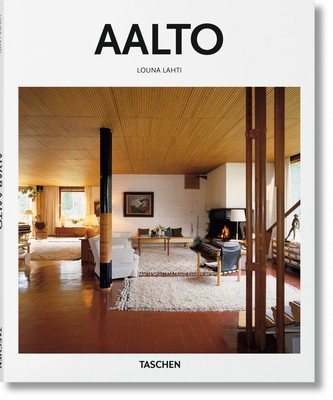| Aalto Contributor(s): Lahti, Louna (Author), Gössel, Peter (Editor) |
|
 |
ISBN: 3836560054 ISBN-13: 9783836560054 Publisher: Taschen OUR PRICE: $18.00 Product Type: Hardcover - Other Formats Language: Spanish Published: September 2015 |
| Additional Information |
| BISAC Categories: - Architecture | History - Modern (late 19th Century To 1945) - Architecture | Individual Architects & Firms - Monographs - Architecture | History - Contemporary (1945 -) |
| Physical Information: 96 pages |
| Descriptions, Reviews, Etc. |
| Publisher Description: Alvar Aalto (1898-1976) made a unique modernist mark. Influenced by both the landscape and the political independence of his native Finland, he designed warm, curving, compassionate buildings, wholly set apart from the slick, mechanistic, geometric designs that characterized much contemporary European practice. Whether a church, a villa, a sauna, or a public library, Aalto's organic structures tended to replace plaster and steel with brick and wood, often incorporating undulating, wave-like forms, which would also appear in his chair, glassware, and lamp designs. An adherent to detail, Aalto insisted upon the humanity of his work stating: "Modern architecture does not mean using immature new materials; the main thing is to work with materials towards a more human line." Many of Aalto's public buildings such as Säynätsalo Town Hall, the lecture theatre at Otaniemi Technical University, the Helsinki National Pensions Institute and the Helsinki House of Culture may be seen as psychological as well as physical landmarks in the rebuilding of Finland after the ravages of war. About the series Born back in 1985, the Basic Art Series has evolved into the best-selling art book collection ever published. Each book in TASCHEN's Basic Architecture series features: an introduction to the life and work of the architect the major works in chronological order information about the clients, architectural preconditions as well as construction problems and resolutions a list of all the selected works and a map indicating the locations of the best and most famous buildings approximately 120 illustrations (photographs, sketches, drafts, and plans) |